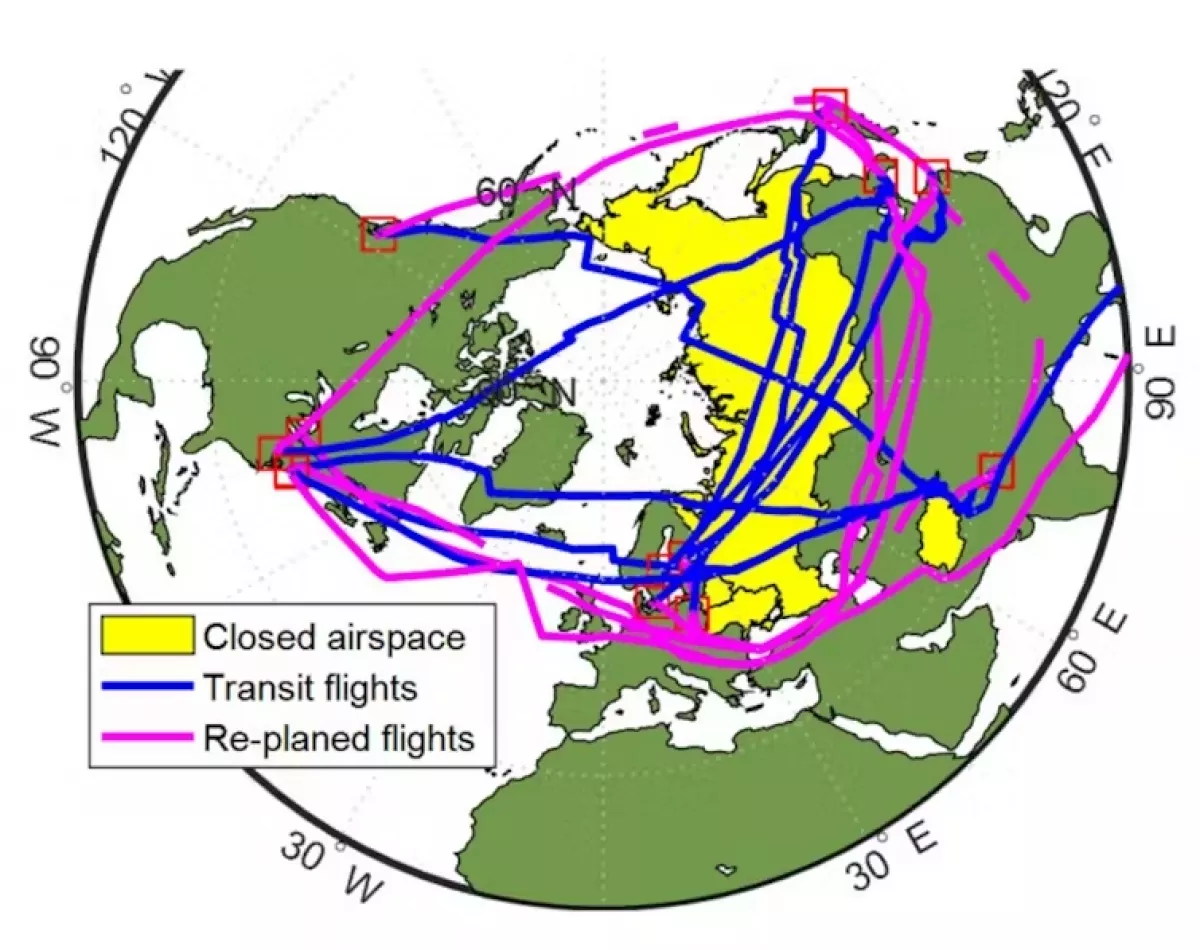How war in Ukraine increased flying's impact on climate
Since the Russian invasion of Ukraine in February 2022, long-haul flights connecting Europe and Asia have been emitting up to 40% more CO₂ due to airspace closures. Airlines have been forced to take longer routes, significantly increasing flight times, fuel consumption, and operating costs, while exacerbating aviation’s environmental impact.
A study led by Assistant Professor Viktoriia Ivannikova from Dublin City University highlights how conflicts can unexpectedly contribute to climate change. An article published by The Conversation calls for industry leaders to understand these effects, which are crucial for mitigating aviation’s environmental footprint. The closure of Ukrainian airspace, along with restricted access to Russian and Belarusian airspace, represents the largest airspace closure since the Cold War, covering 18 million km².
As a result, airlines that once relied on these airspaces for efficient routes between Europe, Asia, North America, and the Middle East have had to find alternatives. For example, Finnair’s Helsinki-to-Tokyo flight now travels an additional 3,131 km, extending flight times by up to 3.5 hours. Similarly, North American flights to Asia have been rerouted over the Arctic and Central Asia.
The situation is further complicated by other conflict zones, including Syria, Yemen, and Iraq, which remain no-fly zones. The changing global aviation landscape has forced airlines to quickly adapt, leading to increased costs and emissions.
An analysis of 14 long-haul routes operated by Finnair, LOT Polish Airlines, and Lufthansa revealed striking results. Rerouted flights burn an extra 23 to 28.5 tonnes of fuel per trip, producing an additional 72 to 90 metric tonnes of CO₂—equivalent to the annual emissions of multiple cars from a single flight.

Airlines have also faced significant financial burdens. Additional flight hours have led to increased fuel consumption, air navigation charges, and higher crew salaries. Depending on the airline and route, operating costs have risen by 19% to 39%, while emissions have increased by 18% to 40%.
For example, LOT Polish Airlines has seen a 23% rise in operating costs and a 24% increase in CO₂ emissions on routes from Warsaw to Beijing, Tokyo, and Seoul. Similarly, Finnair, which relied heavily on Russian airspace, has been hit the hardest. Flight restrictions have led to a 39% increase in operating costs on routes from Helsinki to Shanghai, Tokyo, and Seoul, while emissions have surged by 40%.
The study underscores the often-overlooked environmental impact of war. Using forecasting models, researchers predict that if airlines continue to avoid Russian and Ukrainian airspace, global aviation-related CO₂ emissions could rise by up to 29% by 2025 compared to 2022. Aviation already accounts for 2.5% of global CO₂ emissions, and this figure is expected to rise as air travel expands.
However, there are potential solutions. Upgrading airline fleets with more fuel-efficient aircraft, such as the Airbus A350 and Boeing 787, could reduce emissions by 20%–25% compared to older models like the Boeing 777-200ER and Airbus A330-200.
Advanced air traffic management systems could also help by optimizing flight paths to minimize unnecessary detours. Additionally, international agreements to manage airspace collectively during conflicts could ensure airlines avoid inefficient rerouting while maintaining safe flight corridors.
Airlines are also investing in sustainable aviation fuels, which emit less CO₂ than conventional jet fuel. However, limited supplies, high costs, and production challenges make this an expensive and partial solution.
Ultimately, with no viable low-carbon alternatives for aviation, reducing air travel remains the most effective strategy to curb emissions.
By Nazrin Sadigova








